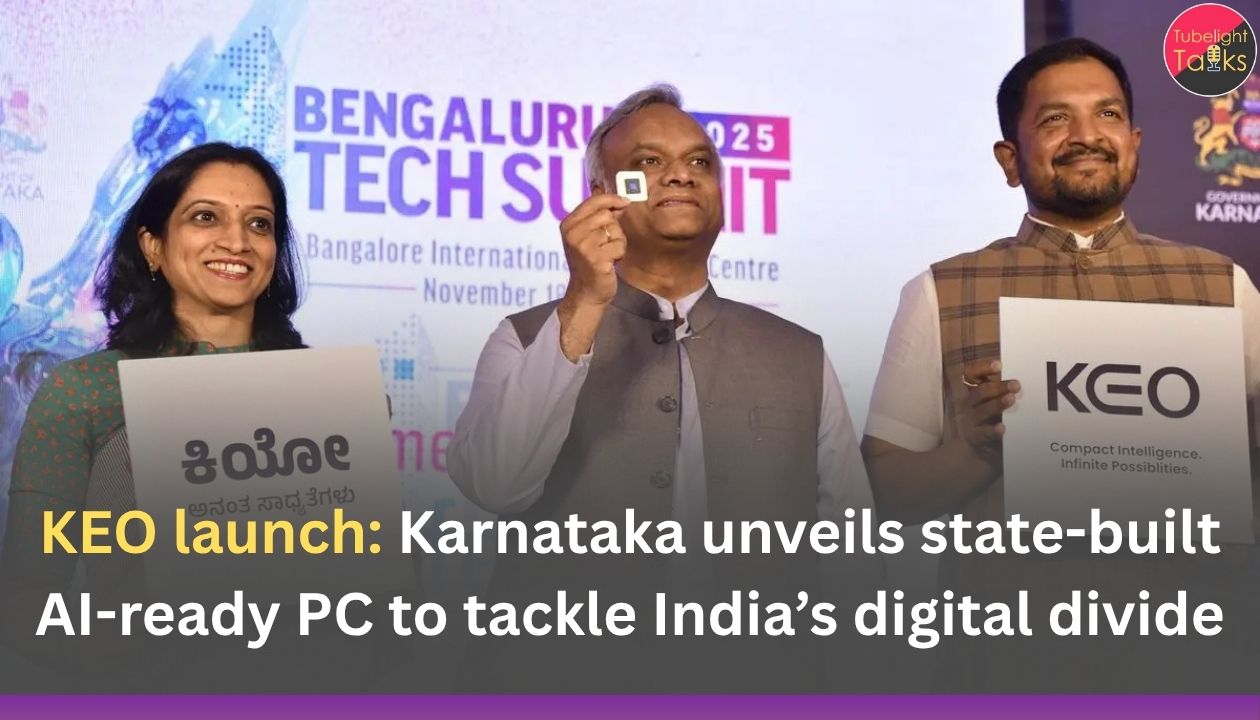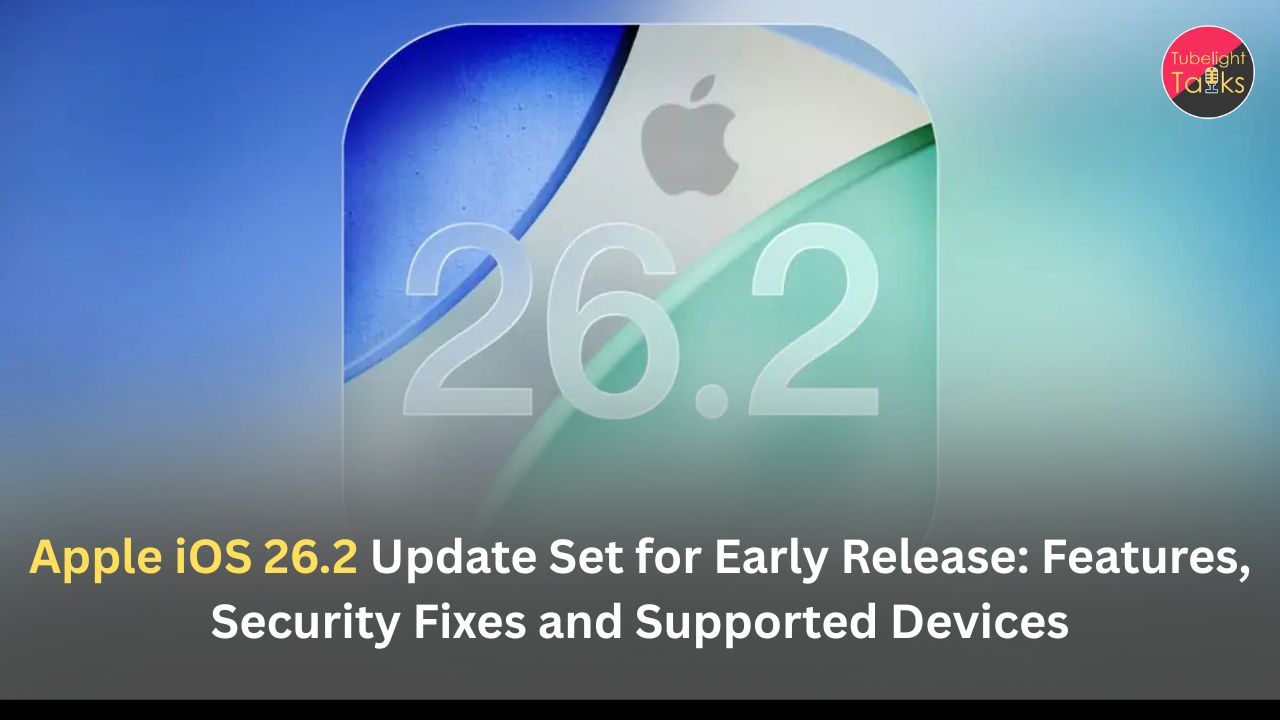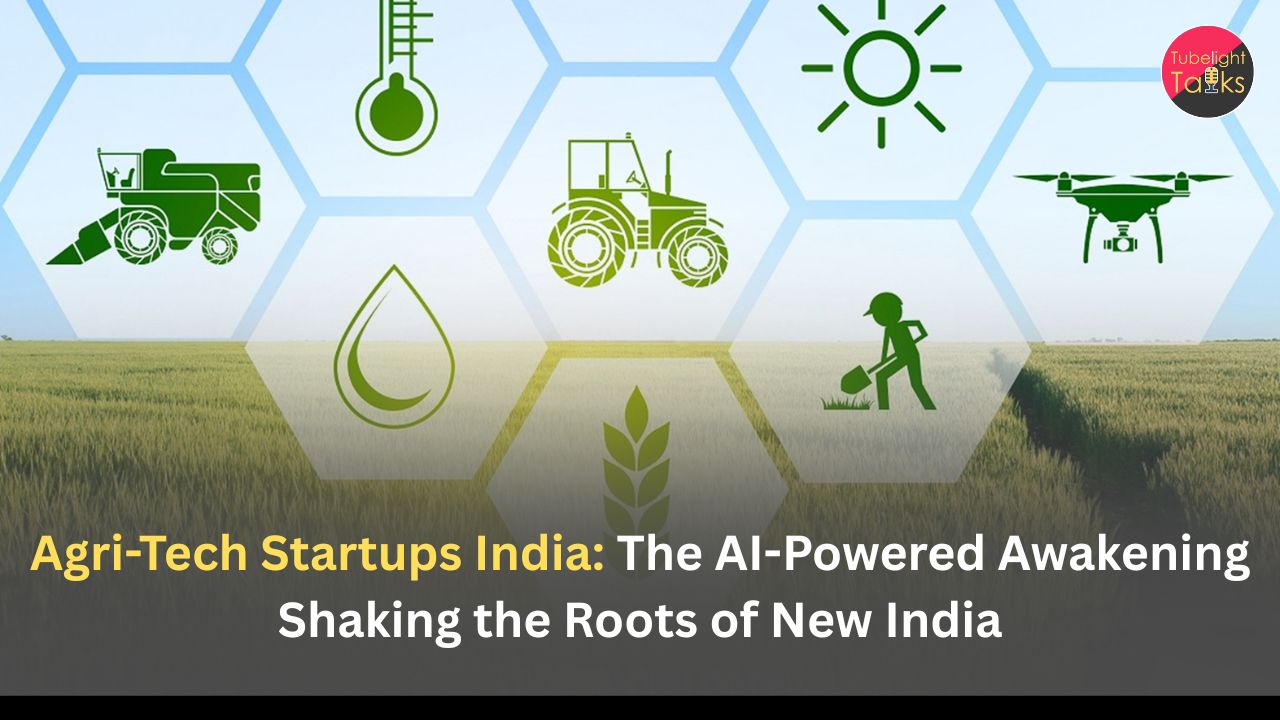KEO launch: In a first-of-its-kind move by any Indian state, Karnataka has launched KEO, a compact, affordable and AI-ready personal computer designed and developed entirely within the state to bridge the digital access gap.
Announced by IT & BT Minister Priyank Kharge at the curtain-raiser for Bengaluru Tech Summit (BTS) 2025, KEO (Knowledge-driven, Economical, Open-source) will be formally unveiled by Chief Minister Siddaramaiah at the summit’s inaugural on 18 November 2025.
Positioned as an “inclusion device, not a luxury device”, KEO aims to take AI-capable computing to students, micro-entrepreneurs and households across Karnataka, at a time when fewer than 10% of Indian households own a computer and computer access remains a major barrier to online learning and digital livelihoods.
What is KEO and who built it?
According to the state announcement, KEO is:
- A compact, affordable desktop-style PC,
- Developed by the Department of Electronics, IT & BT in collaboration with KEONICS (Karnataka State Electronics Development Corporation Ltd.),
- Designed, developed and assembled in Karnataka with contributions from local startups and engineers,
- Built on an open-source RISC-V processor with a Linux-based operating system.
Connectivity & I/O features include:
- 4G, Wi-Fi, Ethernet,
- USB-A and USB-C ports,
- HDMI output and audio support,
- Preloaded learning, programming and productivity tools for students and creators.
The price point has not yet been disclosed; officials said this will be announced during BTS 2025.
AI at the edge: BUDDH, the on-device tutor
One of KEO’s most distinctive features is its on-device AI capability:
- KEO ships with an embedded AI core, enabling AI applications to run locally without constant internet.
- It includes “BUDDH”, an AI agent trained on the DSERT (Department of State Educational Research and Training) school syllabus to support students.
- Because the AI is on-device, students in low-connectivity or patchy-network regions can still access interactive explanations, doubt support and guided learning.
This aligns with broader edge AI trends, where intelligence moves closer to users for privacy, latency and offline resilience, instead of depending fully on cloud connectivity.
Target: Digital divide, not just tech showpiece
Priyank Kharge used the launch to highlight India’s sharp digital access gap:
- He pointed out that less than 10% of Indian households own a computer, and in Karnataka the figure is only around 15%, well below what is needed for modern education and work.
- Studies and NSSO data have shown that only about one in ten Indian households has a desktop/laptop/tablet, and many students were unable to join online classes during the pandemic due to lack of a device.
Smartphones are widespread, but research and on-ground experience show that serious academic work, coding, design and hybrid learning are significantly harder on phones compared to a full computer.
Kharge framed KEO as “Karnataka’s practical answer to the digital divide”—a device meant for:
- Students (school to college),
- Small businesses and shops,
- Households in semi-urban and rural areas,
- Government offices and community centres,
giving them a realistic on-ramp to the digital economy and AI era.
How KEO fits into Bengaluru Tech Summit 2025 and “Futurise”
KEO will be showcased throughout Bengaluru Tech Summit 2025, which runs 18–20 November 2025 at Bangalore International Exhibition Centre under the theme “Futurise”.
BTS 2025 will feature:
- 10 focused conference tracks, including IT & DeepTech, Electro–Semicon, DigiHealth & Biotech, Defence & SpaceTech, Finverse and AI Universe,
- Over 15,000 delegates, 500+ speakers and 1,000+ exhibitors from 60+ countries,
- Dedicated startup and innovation halls highlighting AI, semiconductors, climate tech and more.
Within this context, KEO is being positioned as:
- A flagship “Made-in-Karnataka” deep-tech product,
- A demo of state-level hardware+AI innovation,
- A platform for local startups to build educational and productivity tools on top of an open, RISC-V-based computing stack.
Why this matters beyond Karnataka
If KEO’s pricing and rollout strategy match its vision, it could become:
- A replicable model for other states
- A reference design for state-backed, open-source computing platforms targeting schools, ITIs, colleges and panchayats.
- A reference design for state-backed, open-source computing platforms targeting schools, ITIs, colleges and panchayats.
- A push for open hardware (RISC-V) in India
- By adopting RISC-V, KEO supports India’s push for indigenous, royalty-free chip architectures and reduces long-term dependence on a few proprietary CPU vendors.
- By adopting RISC-V, KEO supports India’s push for indigenous, royalty-free chip architectures and reduces long-term dependence on a few proprietary CPU vendors.
- A testbed for offline, local AI
- With the BUDDH AI tutor and an on-device AI core, KEO can seed a micro-ecosystem of edge AI apps for education, health awareness, agriculture advisories and small business tools—especially in low-bandwidth regions.
- With the BUDDH AI tutor and an on-device AI core, KEO can seed a micro-ecosystem of edge AI apps for education, health awareness, agriculture advisories and small business tools—especially in low-bandwidth regions.
- A concrete step against inequality in digital learning
- Instead of only talking about “AI for all”, KEO represents a physical, deployable product that can sit in anganwadi centres, government schools, urban slums and village libraries, making the AI story more inclusive.
- Instead of only talking about “AI for all”, KEO represents a physical, deployable product that can sit in anganwadi centres, government schools, urban slums and village libraries, making the AI story more inclusive.
Execution will depend on scale, pricing, maintenance, teacher training and content quality—but the policy signal is clear: state governments can be product builders, not just policy-makers.
Technology with Humanity
From the perspective of Satgyan as explained by Sant Rampal Ji Maharaj, the KEO story carries a deeper lesson: Vikas (development) must include the last child in the class: When only a privileged few have computers, digital vikas becomes another layer of inequality. A Dharmic state must ensure that tools of knowledge and earning reach those at the bottom, not just those in tech parks.
Satgyan teaches that material knowledge (technology, AI, coding) is valuable, but incomplete without true spiritual knowledge and ethical grounding.
Read Also: The Rise of Digital India: How Technology Is Empowering Every Citizen
FAQs: KEO launch AI Karnataka
1. What exactly is KEO?
KEO is a state-developed, AI-ready personal computer launched by Karnataka. It is a compact desktop-style device built on an open-source RISC-V processor with a Linux OS, offering 4G, Wi-Fi, HDMI, USB ports and preloaded learning and productivity tools.
2. Who developed KEO?
KEO has been developed by the Karnataka Department of Electronics, IT & BT in collaboration with KEONICS, with design and assembly done in-state and inputs from local startups and engineers.
3. What makes KEO “AI-ready”?
KEO includes an on-device AI core and ships with “BUDDH”, an AI tutor trained on Karnataka’s DSERT school syllabus. This allows AI features like explanations and doubt clarification to run locally, including in low or no-internet settings.
4. How does KEO address the digital divide?
India has fewer than 10% households with a computer, meaning millions of students had no proper device for online learning or coding. KEO is designed as an affordable, inclusion-focused PC that can be deployed in schools, homes and small businesses, providing full keyboard–screen computing instead of just smartphone access.
5. When and where will KEO be publicly unveiled?
KEO will be formally unveiled by Chief Minister Siddaramaiah at the inaugural of Bengaluru Tech Summit 2025 on 18 November 2025, at Bangalore International Exhibition Centre, under the theme “Futurise”.










